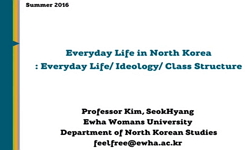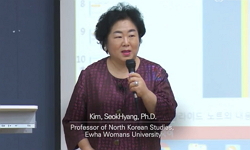This thesis explores and seeks to find correlations between South Korean and the United States’ aid to North Korea and North Korean threats focusing on military provocations towards South Korea and missile and nuclear tests from 1998 to 2012 since N...
http://chineseinput.net/에서 pinyin(병음)방식으로 중국어를 변환할 수 있습니다.
변환된 중국어를 복사하여 사용하시면 됩니다.
- 中文 을 입력하시려면 zhongwen을 입력하시고 space를누르시면됩니다.
- 北京 을 입력하시려면 beijing을 입력하시고 space를 누르시면 됩니다.
A Study on the correlations between South Korea and U.S. aid to North Korea and North Korean provocation : the case of military provocation, nuclear test and missile launch between 1998 and 2012
한글로보기https://www.riss.kr/link?id=T13438642
- 저자
-
발행사항
서울 : 서울대학교 국제대학원, 2014
-
학위논문사항
학위논문(석사) -- 서울대학교 국제대학원 , 국제학과(국제협력전공) , 2014. 2
-
발행연도
2014
-
작성언어
영어
- 주제어
-
DDC
327.17 판사항(22)
-
발행국(도시)
서울
-
기타서명
한미 대북원조와 북한 도발과의 상관관계 연구: 1998년과 2012년 사이 대남도발과 핵실험 및 미사일 발사를 중심으로
-
형태사항
vi, 96 p. : 삽화 ; 26 cm
-
일반주기명
지도교수:신성호
참고문헌 수록 - DOI식별코드
- 소장기관
-
0
상세조회 -
0
다운로드
부가정보
다국어 초록 (Multilingual Abstract)
Both North Korean military provocations and nuclear and missile tests between 1998 and 2012 occurred regardless of the aid transferred by South Korea and the United States, thus, South Korean aid and the United States aid towards North Korea does not affect lead to behavior change in North Korea based on the given framework. However, this research also shows that North Korean military provocation or nuclear and missile tests were more likely to occur when South Korea and the United States reduced their aid volume compared to that of the previous year, suspended aid, and when the aid volume was below the average. Indeed, this study concludes that military provocation is more correlated to the South Korean aid than the United States aid, and nuclear tests and missile launches are more correlated to the United States aid than South Korean aid. Nonetheless, the reduction of aid volume is due to the treacherous behavior of North Korea despite the assistance of South Korea and the United States when looking at the issues thoroughly, and North Korea is focused more on the United States aid than the South Korean aid.
This thesis explores and seeks to find correlations between South Korean and the United States’ aid to North Korea and North Korean threats focusing on military provocations towards South Korea and missile and nuclear tests from 1998 to 2012 since North Korean military provocations, missile launches and nuclear tests have been continued despite the South Korean government and the United States government’s pursuit of either engagement policy or containment policy. It attempts to find instances where the aid from South Korea and the United States positively and successfully induced behavior change in North Korea by applying the framework settled in accordance to the definition and purpose of the aid, which is based on the idea that a receiving country would change its behavior if a sending country provides aid. In order to find correlations between South Korean and the United States’ aid to North Korea and North Korean provocation, this paper lists each provocation that occurred between 1998 and 2012 and analyzes both aid volume and the fluctuation of the aid from the previous year towards North Korea from South Korea and the United States as well as North Korea’s response on the aid provided by South Korea and the United States.
Both North Korean military provocations and nuclear and missile tests between 1998 and 2012 occurred regardless of the aid transferred by South Korea and the United States, thus, South Korean aid and the United States aid towards North Korea does not affect lead to behavior change in North Korea based on the given framework. However, this research also shows that North Korean military provocation or nuclear and missile tests were more likely to occur when South Korea and the United States reduced their aid volume compared to that of the previous year, suspended aid, and when the aid volume was below the average. Indeed, this study concludes that military provocation is more correlated to the South Korean aid than the United States aid, and nuclear tests and missile launches are more correlated to the United States aid than South Korean aid. Nonetheless, the reduction of aid volume is due to the treacherous behavior of North Korea despite the assistance of South Korea and the United States when looking at the issues thoroughly, and North Korea is focused more on the United States aid than the South Korean aid.
목차 (Table of Contents)
- Table of Contents
- Abstract
- Table of Contents
- List of Tables, Graphs, and Figures
- Table of Contents
- Abstract
- Table of Contents
- List of Tables, Graphs, and Figures
- I. INTRODUCTION
- 1. Background of Research
- 2. Research Question
- 3. Literature Review
- II. ANALYTICAL FRAMEWORK
- 1. Framework Settled by the Definition and Purpose of Aid
- 2. Previous Studies on Framework
- 3. Scope of Research
- III. SOUTH KOREA AND THE U.S. AID TOWARDS NORTH KOREA
- 1. Brief History and Objectives of Aid towards North Korea
- 2. South Korean Aid towards North Korea
- 3. The U.S. Aid towards North Korea
- IV. AID AND MILITARY PROVOCATION
- 1. The First Battle of Yeonpyeong-do on June15, 1999
- 2. The Second Battle of Yeonpyeong-do on June 29, 2002
- 3. The Battle of Daecheong-do on November 10, 2009
- 4. The Sinking of the ROKS Cheonan on March 26, 2010 and the Shelling of Yeonpyeong on November 23, 2010
- V. AID AND NUCLEAR TEST AND MISSILE LAUNCH
- 1. The First Missile Launch: Daepodong-1 on August 31, 1998
- 2. The Second Missile Launch: Daepodong-2 on July 5, 2006 and the First Nuclear Test on October 9, 2006
- 3. The Third Missile Launch: Daepodong-2 on April 5, 2009 and the Second Nuclear Test on May 25, 2009
- 4. The Fourth Missile Launch: Daepodong-2 on April 13, 2012 and the Fifth Missile Launch: Daepodong-2 on December 12, 2012
- V. IMPLICATION AND CONCLUSION
- VI. BIBLIOGRAPHY
- 국문 초록












